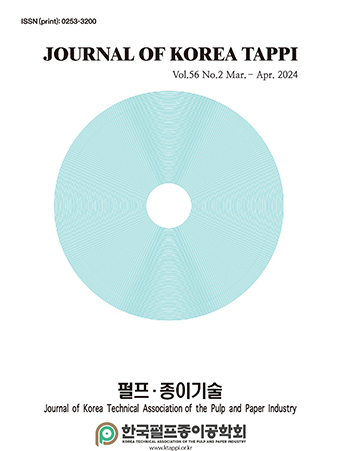Literature Cited
GESAMP, Sources, fate and effects of microplastics in the marine environment: Part 2 of a global assessment, Kershaw, P. J. and Rochman, C. M. (ed.), IMO/FAO/UNESCO-IOC/UNIDO/WMO/IAEA/UN/UNEP/UNDP Joint Group of Experts on the Scientific Aspects of Marine Environmental Protection, GESAMP Reports and Studies No. 93, pp. 17-19 (2016).
Leslie, H. A., Plastic in Cosmetics; Are we polluting the environment through our personal care?, Report from United Nationals Environmental Programme (UNEP) (2015).
Miller, K., Santillo, D. and Johnston, P., Plastics in Seafood – Full technical review of the occurrence, fate and effects of microplastics in fish and shellfish, Greenpeace Research Laboratories Technical Report (2016).
Moon, S. M., Jeon, S. H., Eom, T. and Shim, B. S., Recent research trends in eco-friendly materials for solving environmental microplastic problems, Prospectives of Industrial Chemistry 22(2):25-43 (2019).
Gericke, M., Trygg, J. and Fardim, P., Functional cellulose beads: Preparation, characterization, and applications, Chemical Reviews 113:4812-4836 (2013).
10.1021/cr300242jSen, S., Martin, J. D. and Argyropoulos, D. S., Review of cellulose non-derivatizing solvent interactions with emphasis on activity in inorganic molten salt hydrates, ACS Sustainable Chemistry & Engineering 1(8):858-870 (2013).
10.1021/sc400085aOlsson, C. and Westman, G., Direct dissolution of cellulose: Background, means and applications, In Cellouse – Fundamental Aspects, Ch. 6, van de Ven, T. and Godbout, L., (ed.), InTech, Rijeka, Croatia pp.143-178 (2013).
10.5772/52144Kostag, M., Gericke, M., Heinze, T. and El Seoud, O. A., Twentty-five years of cellulose chemistry: Innovations in the dissolution of the biopolymer and its transformation into esters and ethers, Cellulose 26:139-184 (2019).
10.1007/s10570-018-2198-0El Seoud, O. A., Kostag, M., Jedvert, K. and Maletk, N. I., Cellulose in ionic liquids and alkaline solutions: Advances in the mechanisms of biopolymer dissolution and regeneration, Polymers 11:1919 (2019).
10.3390/polym11121917Yang, X., Wang, Q. and Yu, H., Dissolution and regeneration of biopolymers in ionic liquids, Russian Chemical Bulletin 63(3):555-559 (2014).
10.1007/s11172-014-0471-4Zhu, S., Wu, Y., Chen, Q., Yu, Z., Wang, C., Jin, S., Ding, Y. and Wu, G., Dissolution of cellulose with ionic liquids and its application: A mini-review, Green Chemistry 8(4):325-327 (2006).
10.1039/b601395cRinaldi, R., Instantaneous dissolution of cellulose in organic electrolyte solutions, Chemical Communications 47:511-513 (2011).
10.1039/C0CC02421JLin, L., Yamaguchi, H. and Suzuki, A., Dissolution of cellulose in the mixed solvent of [bmim]Cl–DMAc and its application, RSC Advances 3(34):14379-14384 (2013).
10.1039/c3ra41299gSuzuki, T., Kono, J., Shimomura, K. and Minami, H., Preparation of cellulose particles using ionic liquid, Journal of Colloid and Interface Science 418:126-131 (2014).
10.1016/j.jcis.2013.12.014Lee, S.-G., Oh, S.-Y. and Cho, B.-U., Dissolution of HwBKP with [Bmim]Cl-DMF solvent and production of cellulose beads: Effect of mixing ratio of solvents, J. of Korea TAPPI 54(2):27-36 (2022).
10.7584/JKTAPPI.2022.04.54.2.27Segal, L., Creely, J. J., Martin, A. E. Jr. and Conrad, C. M., An empirical method for estimating the degree of crystallinity of native cellulose using the X-ray diffractometer, Textile Research Journal 29(10):786-794 (1959).
10.1177/004051755902901003Tseng, Y.-H., Lee, Y.-Y. and Chen, S.-H., Synthesis of quaternary ammonium room-temperature ionic liquids and their application in the dissolution of cellulose, Applied Sciences 9:1750 (2019).
10.3390/app9091750Miller, A. F. and Donald, A. M., Surface and interfacial tension of cellulose suspensions, Langmuir 18(26):10155-10162 (2002).
10.1021/la0258300Kim, Y., An, H.-J. and Cho, B.-U., Production of cellulose beads with TEAH-urea solvent and dropping technique: Effect of concentration of cellulose solution, J. of Korea TAPPI 53(1):83-89 (2021).
10.7584/JKTAPPI.2021.02.53.1.83Kim, Y., An, H.-J. and Cho, B.-U., Production of cellulose beads with TEAH-urea solvent and dropping technique: Effect of inner diameter of syringe needle, J. of Korea TAPPI 52(6):149-156 (2020).
10.7584/JKTAPPI.2020.12.52.6.149- Publisher :Korea Technical Association of The Pulp and Paper Industry
- Publisher(Ko) :한국펄프종이공학회
- Journal Title :Journal of Korea TAPPI
- Journal Title(Ko) :펄프종이기술
- Volume : 54
- No :4
- Pages :75-84
- Received Date : 2022-07-08
- Revised Date : 2022-08-05
- Accepted Date : 2022-08-09
- DOI :https://doi.org/10.7584/JKTAPPI.2022.08.54.4.75



 Journal of Korea TAPPI
Journal of Korea TAPPI







